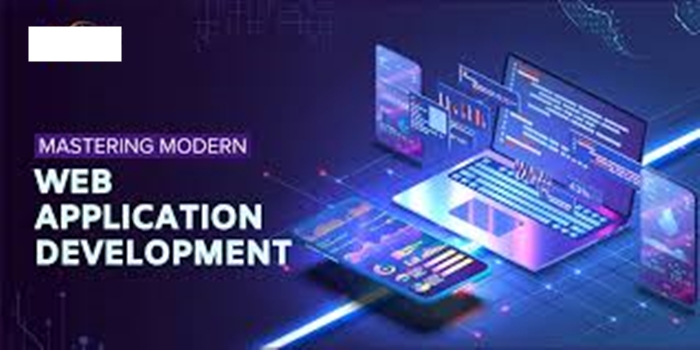In this article, we discussed the meaning of modern web and app development, the examples, the benefits, the role of chatbots in Modern Web and App Development.
Definition
Web application development is the creation of application programs that reside on remote servers and are delivered to the user’s device over the internet. Web apps don’t need to be downloaded and instead are accessed through a network.
Modern web and app development examples include:
Web Application Examples:
Social media: Facebook, Instagram, X (formerly Twitter), Pinterest
E-commerce: Amazon, Shopify, Etsy
Productivity Tools: Google Workspace (Docs, Sheets, Slides), Notion, Trello
Streaming Services: Netflix, Spotify, YouTube
Collaboration Platforms: Slack, Zoom, Microsoft Teams
Online Banking: Chase, Bank of America, Wells Fargo
Content Management Systems (CMS): WordPress, Drupal
Visual Collaboration: Miro, Figma
Educational Platforms: Coursera, Duolingo
Project Management: Asana, ClickUp
Mapping and Navigation: Google Maps, Waze
Email: Gmail, Outlook
Online Retail: Amazon, eBay
Online Auctions: eBay
Wikis: Wikipedia
Instant Messaging: WhatsApp, Telegram
Web-Based Editors: Canva, Adobe Creative Cloud
Data Management: Airtable
App Development Examples:
Customer-Facing Apps: Uber, DoorDash, Starbucks
Employee-Facing Apps: Salesforce, Microsoft Teams
Data Management Apps: Airtable, Notion
Educational Apps: Duolingo, Coursera
Healthcare Apps: Fitbit, MyFitnessPal
Fitness Apps: Nike Training Club, Strava
Social Media Apps: Instagram, TikTok
Messaging Apps: WhatsApp, Telegram
Navigation Apps: Google Maps, Waze
Streaming Apps: Netflix, Spotify
E-commerce Apps: Amazon, Shopify
Banking Apps: Chase, Bank of America
Productivity Apps: Google Workspace, Notion
Gaming Apps: Fortnite, Call of Duty
Utility Apps: Weather apps, calculator apps
Mobile Payment Apps: Venmo, PayPal
Modern web and app development offers significant benefits, including:
For Businesses:
Cost-Effectiveness:
Web applications can be developed more quickly and with lower costs compared to native apps, as they leverage existing web infrastructure and technologies.
Scalability and Flexibility:
Web apps can easily scale to accommodate growing user bases and evolving business needs, without requiring significant infrastructure changes.
Improved User Experience:
Modern web development techniques, like Progressive Web Apps (PWAs), can deliver app-like experiences with fast loading times, push notifications, and offline capabilities.
Enhanced Customer Engagement:
Web apps provide a platform for businesses to interact with customers, gather feedback, and offer personalized experiences.
Streamlined Operations:
Web applications can automate business processes, improve data management, and facilitate real-time collaboration, leading to increased productivity and efficiency.
Data Accessibility and Insights:
Web apps allow businesses to collect and analyze user data, providing valuable insights into customer behavior and market trends.
Improved Brand Identity:
A well-designed website or web application can significantly enhance a company’s brand image and credibility.
Increased Reach and Visibility:
Web applications offer broad accessibility, allowing businesses to reach a wider audience and expand their market reach.
Automated Processes:
Web applications can automate tasks, saving time and resources for businesses.
For Users:
Cross-Platform Compatibility:
Web apps can be accessed from any device with a web browser, ensuring a consistent user experience across different platforms.
Ease of Access:
Users don’t need to download or install web apps, making them easy to access and use.
Automatic Updates:
Web apps receive automatic updates, ensuring they are always up-to-date with the latest features and security patches.
Enhanced Security:
Modern web development frameworks and technologies incorporate robust security measures to protect user data and prevent security breaches.
Accessibility:
Web apps can be designed to be accessible to users with disabilities, ensuring inclusivity and a better user experience for everyone.
Improved Performance:
PWAs and other modern web technologies can deliver fast loading times and a responsive user experience, even on slower connections.
Consistent User Experience:
Web apps can provide a consistent user experience across different devices and browsers, making it easier for users to navigate and interact with the application.
Their Role Web application Development:
Enhancing User Experience:
Interactive and Personalized Interactions:
Chatbots allow for real-time, personalized interactions, offering a more engaging and intuitive user experience compared to traditional interfaces.
Streamlined Navigation and Information Access:
They can guide users through complex processes, answer questions, and provide easy access to information, making websites and apps more user-friendly.
Proactive Assistance:
Chatbots can proactively offer assistance, anticipate user needs, and provide timely support, improving overall satisfaction.
Boosting Customer Service and Support:
24/7 Availability:
Chatbots can provide instant support and answer queries around the clock, ensuring users always have access to help.
Efficient Task Handling:
They can handle repetitive tasks and common inquiries, freeing up human agents to focus on more complex issues.
Improved Customer Satisfaction:
By providing quick and accurate responses, chatbots help improve customer satisfaction and build stronger relationships.
Driving Business Growth and Efficiency:
Lead Generation and Sales:
Chatbots can engage potential customers, qualify leads, and guide them through the sales process, ultimately driving conversions.
Data Analysis and Insights:
By analyzing user interactions, chatbots can provide valuable data and insights into customer behavior, preferences, and pain points.
Cost-Effectiveness:
Implementing chatbots can significantly reduce customer service costs by automating tasks and providing 24/7 support.
Omnichannel Support:
Chatbots can be integrated across multiple channels, including websites, mobile apps, and social media, providing a consistent and seamless customer experience.
Personalized Experiences:
Chatbots can use AI and machine learning to analyze user data and offer personalized recommendations and experiences.
Streamlined Development Processes:
AI-powered chatbots can help streamline development processes by automating tasks and providing real-time feedback.
Conclusion
One of the most important benefits of integrating chatbots into web development is that it reduces the cost of operations. Companies can provide 24×7 customer service with a few live agents. Chatbots can also collect all customer information and then pass them on to the agent for a quick resolution.
READ: Graphic Design for Social Media and Web


